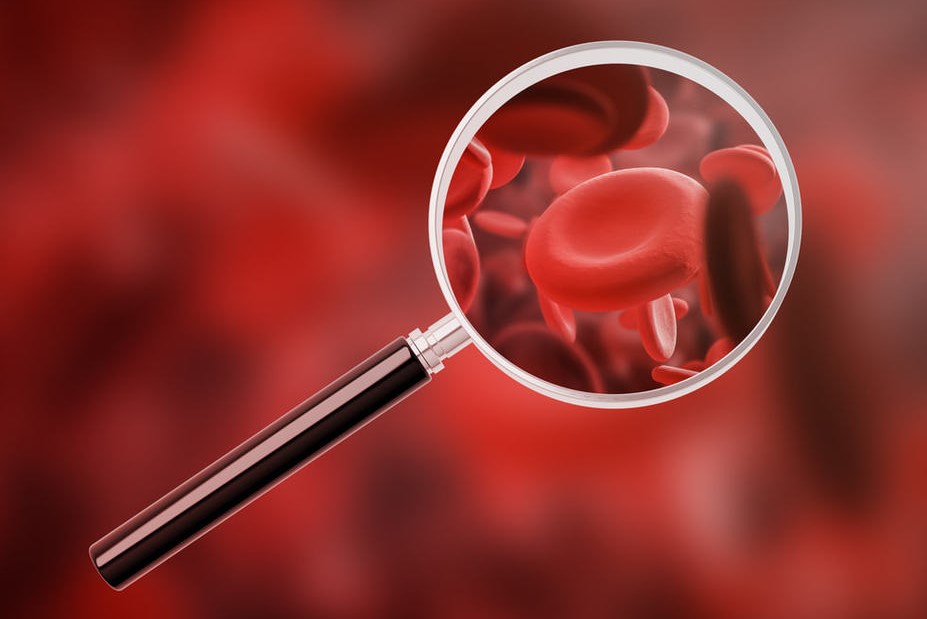
Low haemoglobin, high haemoglobin, causes and normal values
Haemoglobin is a soluble red protein found in red blood cells; its function is to transport oxygen throughout the body’s tissues
It is sometimes referred to as Hb and, when it deposits the required oxygen in a cell, it becomes capable of taking up waste carbon dioxide and returning it to the lungs for elimination.
When the patient’s hydration is normal, the measured value is about one-third of the haematocrit value.
Normal haemoglobin Hb values
Men: 14.0-17.5 (average 15.7) g/dl
Women: 12.3-15.3 (mean 13.8) g/dl
Children
Birth: average 16.5 g/dl
1-3 days: average 18.5 g/dl
First week: average 17.5 g/dl
Second week: average 16.5 g/dl
1 month: average 14.0 g/dl
2 months: average 11.5 g/dl
3-6 months: average 11.5 g/dl
0.5-2 years: average 12.0 g/dl
2-6 years: average 12.5 g/dl
6-12 years: average 13.5 g/dl
12-18 years old woman: average 14.0 g/dl
12-18 years old man: average 14.5 g/dl
Interpretation of haemoglobin values
In clinical practice, small variations from the reference values are very common (especially downwards) and are usually completely insignificant and therefore negligible; more important variations, however, must be investigated.
Low values (anaemia) are common to many diseases, what they have in common is usually that the body produces fewer red blood cells or destroys them faster than they can be produced, or if blood loss occurs.
The causes can therefore be various:
- iron deficiency
- vitamin B12 deficiency,
- folate deficiency,
- bleeding,
- tumours affecting the bone marrow, such as leukaemia,
- kidney diseases,
- liver diseases,
- hypothyroidism,
- thalassaemia (a genetic disease that causes low haemoglobin and red blood cell counts).
If anaemia has already been diagnosed in the past, a lower-than-normal result indicates the need to change the treatment plan.
If the values are higher than normal, which is a rarer situation, the causes can be of various origins:
- Red blood cell production increases to compensate for low blood oxygen levels caused by cardiac, pulmonary or environmental difficulties (e.g. at high altitudes).
- Bone marrow dysfunction, which results in increased red blood cell production (usually polycythaemia).
- Smoking habit.
- Taking drugs or hormones, often erythropoietin (EPO), that stimulate red blood cell production.
Further conditions that may explain upward alterations in haemoglobin levels include:
- dehydration,
- burns,
- repeated vomiting,
- excessive exercise.
A past diagnosis of polycythaemia, on the other hand, indicates the need for an adjustment in therapy.
Low values (Anaemia)
- Anaemia
- Vitamin B deficiency
- Cirrhosis
- Excess hydration
- Haemorrhage
- Endocarditis
- Rheumatic fever
- Pregnancy
- Infection
- Hypothyrodidism
- Leukaemia
- Lymphoma
- Systemic Lupus Erimatosus
- Kidney disease
- Malnutrition
- Multiple myeloma
- Addison’s disease
- Bone marrow suppression
- Hodgkin’s tumour
- High haemoglobin values
- Renal cyst
- Congenital heart defect
- Dehydration
- Cardiovascular diseases
- Pulmonary diseases
- Polycythaemia
- Shock
- Cushing’s syndrome
- Liver cancer
- Burns
(Warning, non-exhaustive list. It should also be noted that small variations from the reference ranges may often have no clinical significance).
Factors influencing haemoglobin testing
- Altered hydration (drinking too much or too little, causing anaemia and excess haemoglobin, respectively)
- Sex,
- Age,
- Altitude,
- Smoking habit.
Women of childbearing age tend to have lower haemoglobin levels than men due to iron and blood loss during menstruation, while they have an increased need for iron during pregnancy.
When the test is required
The test can be requested for several reasons:
- For a routine assessment: The doctor will request the test as part of a general screening.
- For diagnosis of a medical condition: The doctor may suggest the haemoglobin test in case of complaints such as weakness, fatigue, shortness of breath or dizziness.
- To monitor a medical condition: If anaemia or polycythaemia is diagnosed, the doctor may use the test to monitor the condition and the effects of treatment.
Symptoms anaemia
- Excessive increase in normal heart rate during exercise,
- fatigue,
- feeling of shortness of breath
- lack of energy during daily activities,
- pale skin and gums.
- Polycythaemia symptoms
- Visual disturbances,
- enlarged spleen and/or liver,
- dizziness,
- headaches,
- redness of the skin.
Read Also:
Emergency Live Even More…Live: Download The New Free App Of Your Newspaper For IOS And Android
How To Lower High Blood Sugar?
Mindful Eating: The Importance Of A Conscious Diet
Symptoms Of Coeliac Disease: When To Consult A Doctor?
Increased ESR: What Does An Increase In The Patient’s Erythrocyte Sedimentation Rate Tell Us?
Anaemia, Vitamin Deficiency Among Causes
Mediterranean Anaemia: Diagnosis With A Blood Test
Iron Deficiency Anaemia: What Foods Are Recommended


